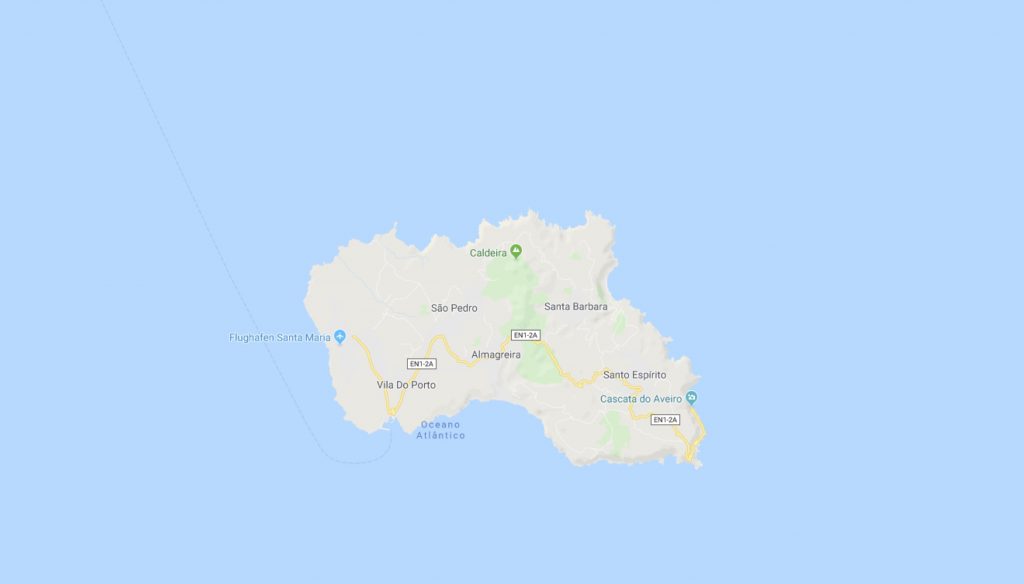
Santa Maria-Azores – Google Maps
GEOGRAPHY
Santa Maria Island, 16.6 km long and with a maximum width of 9.1 km, has an area of 97 km2. 5,552 people live there (data from 2011). Santa Maria, together with São Miguel, which is 81 km away, is part of the Eastern Group of the archipelago.
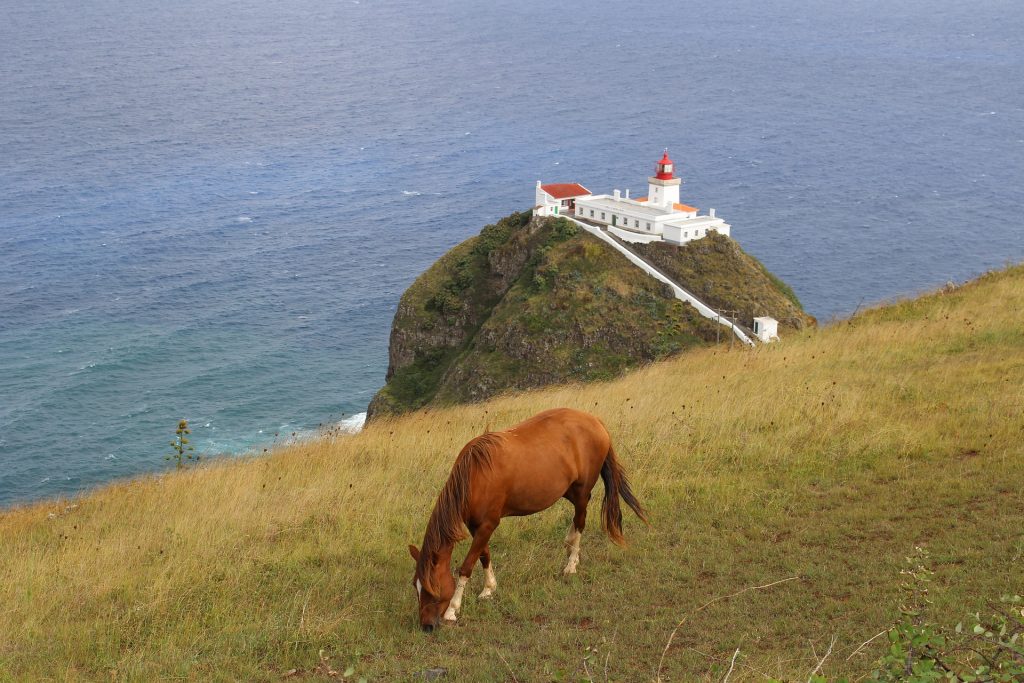
Its highest point (587 m) is Pico Alto, at 36 ° 58’59 ’’ north latitude and 25 ° 05’26 ’’ west longitude.
HISTORY
Some attribute the discovery of the island to Diogo de Silves, probably in 1427. Others propose the name of Gonçalo Velho Cabral, sailor and friar of the Order of Christ, and the year 1431, but it is almost certain that the initial contact with the Azores Islands happened right in Santa Maria, and that the first experience of population was made here, around 1439, when the capitão-donatário (a kind of governor) Gonçalo Velho and a group of settlers settled in Praia dos Lobos .
The history of the Azores
The arrival of other families from mainland Portugal, and especially from the Algarve and Alentejo regions, contributed to the development of Santa Maria, so much so that the town of Porto was the first to receive the status of vila in the Azores ( small town). The local economy was based on the cultivation of ford, a plant from which the blue dye used in distant Flanders to dye fabrics was extracted, on the production of wheat (the food base of the time) and on the extraction of a used clay for making crockery and tiles.
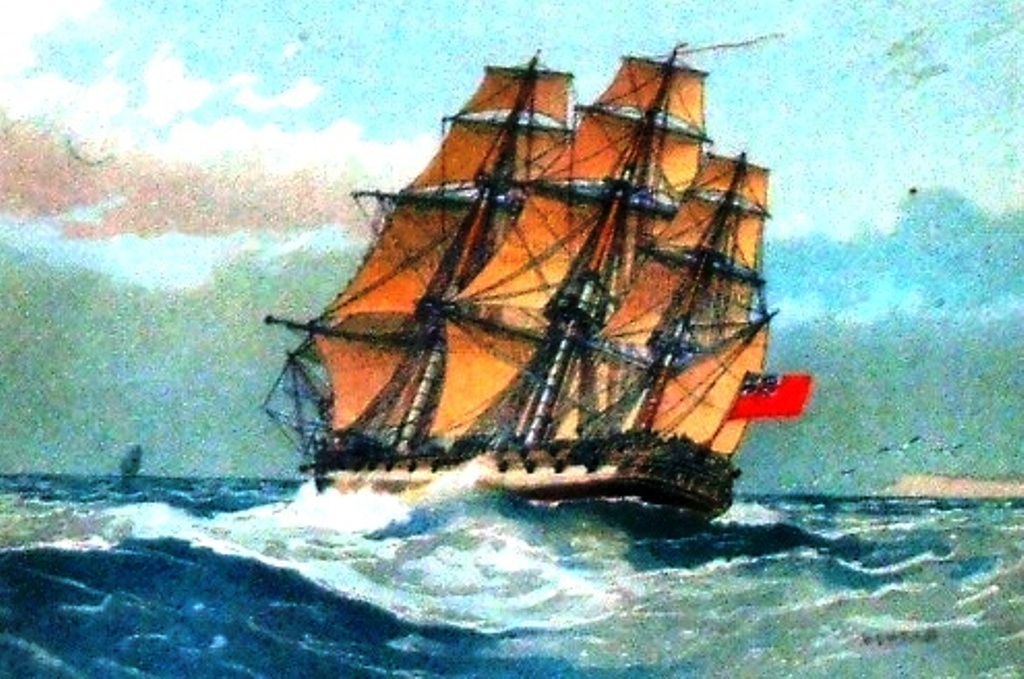
In 1493, the ships of Christopher Columbus docked in Santa Maria Island, on their return from America’s first voyage of discovery. Landings from other foreign ships were more ferocious: in the 16th and 17th centuries the island was repeatedly stormed and plundered by English, French, Turkish and North African Arab corsairs. In 1616, it was occupied by the Moors for a week. According to legend, a part of the population took refuge in the cave called Furna de Santana to escape looting, fires, torture and kidnappings. In 1675, the Moorish pirates returned to the bay of Anjos, and they left, taking prisoners away to sell with slaves.
After the success of exports for the textile industry, the seventeenth and eighteenth centuries saw the development of the cultivation of vines, wheat, corn, fruit, potatoes and yam, and that of the breeding and production of dairy products . Although the times were calmer, the island’s subsistence economy stimulated the emigration of a part of the population. In the twentieth century, a new development dynamic began, mainly thanks to the construction of the airport. Started in 1944, and entrusted to thousands of American and Azorean arms, the structure proved strategic for the United States, especially in the anti-submarine struggle, during the Second World War. At the end of the conflict, the airport became civilian and was transformed into a stopover for planes crossing the Atlantic. Towards the end of the 1960s, the new jets, with greater flight autonomy, stopped landing in Santa Maria, but its important role as an air traffic control center on the Atlantic never failed. Currently the base of the island’s economy is the tertiary sector, followed by agricultural activities and fishing.
NATURE:
THE YELLOW ISLAND
Being the Azores island located further south and east, Santa Maria enjoys a rather hot and dry climate, with lower rainfall indices than those of the other islands, thus presenting more arid soils and drier vegetation, which assumes yellow tones. It is also known as the ‘Island of the Sun’.
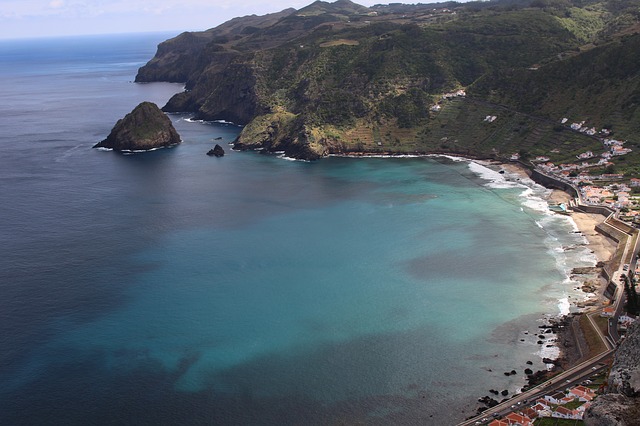
Santa Maria Island has two sectors with distinct reliefs and characteristics: a flat and low area to the west, where the airport and the urban area of Vila do Porto are located, and a more rugged eastern half, with a more lush vegetation, which includes the Pico Alto massif, from which you can enjoy a beautiful panoramic view.
Santa Maria was not only the first island to be discovered and populated: it was also the first Azores island to be formed, having emerged from the ocean floor about 10 million years ago. This venerable age and its eventful geological past explain its extraordinary morphological and landscape characteristics.
VOLCANIC LANDSCAPES
The passage of millennia and the inexorable and persistent action of time determined the alteration of the rocks, forming new types of soil. Modeled in climatic conditions very different from the current ones, on the island, the clay deposits called barreiros stand out, which have an arid appearance and a color that varies from reddish to bright orange. The Barreiro da Faneca, known as the “red desert”, fascinates visitors with its gently undulating surface, whose hue varies according to the hours of the day.In Poço da Pedreira, a cavity excavated on the Pico Vermelho, the chromatism is equally peculiar. In this ancient area of extraction of stone, nature came to the aid of the men of Santa Maria, creating a body of water at the base of the ancient front of the excavations, and a landscape without equal (which moreover testifies to the ability of self-regeneration environment).In the Baía dos Cabrestantes, the small outcrop of volcanic submarine tuffs with yellowish tones does not allow us to imagine the true extent of the phenomenon: it is the oldest geological formation of Santa Maria and the whole archipelago.The oddity of volcanic forms is evident at the Ribeira do Maloás, where visitors can see a prismatic disjunction in a millennial basaltic lava flow. The long and high wall of “lava columns” recalls the Irish Giant’s Causeway, and invites to a contemplative break.In front of the imposing 110-meter Cascade do Aveiro, or in Ponta do Castelo, where the Gonçalo Velho lighthouse stands proudly like a sentry, the feeling you feel is the same: you feel yourself in front of a grandiose landscape.Being the oldest island in the Azores, Santa Maria has recorded various fluctuations in sea level in its volcanic and sedimentary rocks, since the very beginning of the existence of the Atlantic Ocean. We can realize this in Pedreira do Campo, where a basaltic flow formed under water and the limestones that contain countless fossils of marine organisms (shells, corals and algae) attest to the geological reality of the island for about five million years.In various places the sedimentary rocks preserve fossils of the different marine organisms that in other times populated the waters around Santa Maria: at the Dalberto Pombo Environmental Interpretation Center, located in the historic center of Vila do Porto, you can see shark teeth, sponges , sea urchins, various types of shells and even cetacean bones.
COAST
The jagged coast of the island, with its high rocky spikes and large inlets with calm and crystalline waters, is a constant invitation to discover and admire. This is the case of the bays of Cré, Raposo and Tagarete, just to name a few.
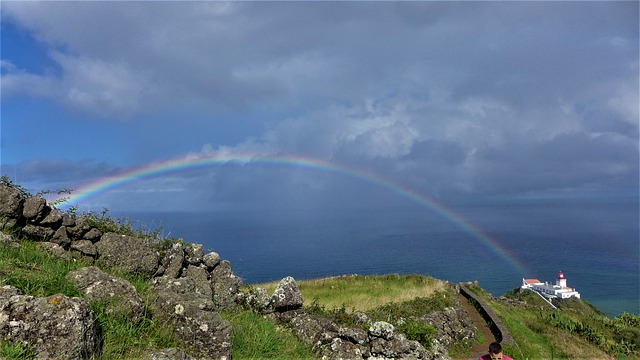
In São Lourenço, the beauty of the delicate inlet, with the islet of Romeiro suggestively located at one of its ends, interacts with the harmonious testimony of human presence. The panels of the vineyards that climb the hill, the white of the houses near the sea and the cultivated fields that divide the land form one of the most captivating panoramas of the Azores, which can be appreciated both from near and far (from the panoramic point of Espigão).In Praia Formosa the sun shines intensely on the clear sand, formed by the whitish sedimentary rocks that outline the coast, giving reason to those who define the beaches of Santa Maria as “the clearest of the Azores”. The beach, long and narrow, is dominated by the ruins of the Fort of São João Baptista, located between the blue of the Atlantic and the greenery that embraces the inlet. Less exuberant, the stony beaches of Figueiral and Baia de Lobos, and the beaches of Prainha and Sul, allow those who wish to remain secluded, in total calm.The volcanic nature of the island has also shaped the natural pools of Maia and Anjos, which have been associated with excellent beach infrastructures.
ATTRACTIONS
Thanks to its particular geoclimatic conditions, Santa Maria is the archipelago’s seaside resort par excellence. It has several natural beaches and swimming pools, with excellent infrastructure for summer activities. Praia Formosa, where surfing, windsurfing, water skiing and sailing are practiced, is perhaps its most famous resort.
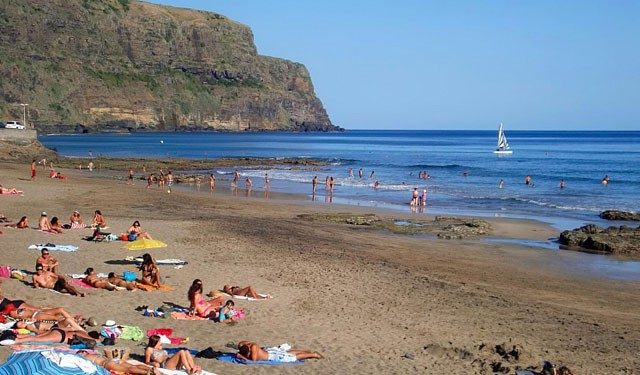
A boat trip, passing through the grotto of the islet of Romeiro and admiring basins and inlets, is the best way to get to know the magnificent coast. The whole coast is excellent for fishing, diving and underwater hunting. Boat trips are organized for coastal trolling or bottom fishing, traditional methods on the island, but also big game fishing on the high seas.Paragliding is another very heavily practiced activity in the various coves of Santa Maria Island. And, accompanied by a guide and with the appropriate equipment, it is possible to explore different natural cavities, such as the Furna de Santana and the Furna Velha, or caves dug by man, such as the Gruta do Figueiral.
HERITAGE AND TRADITIONS:ARCHITECTURE
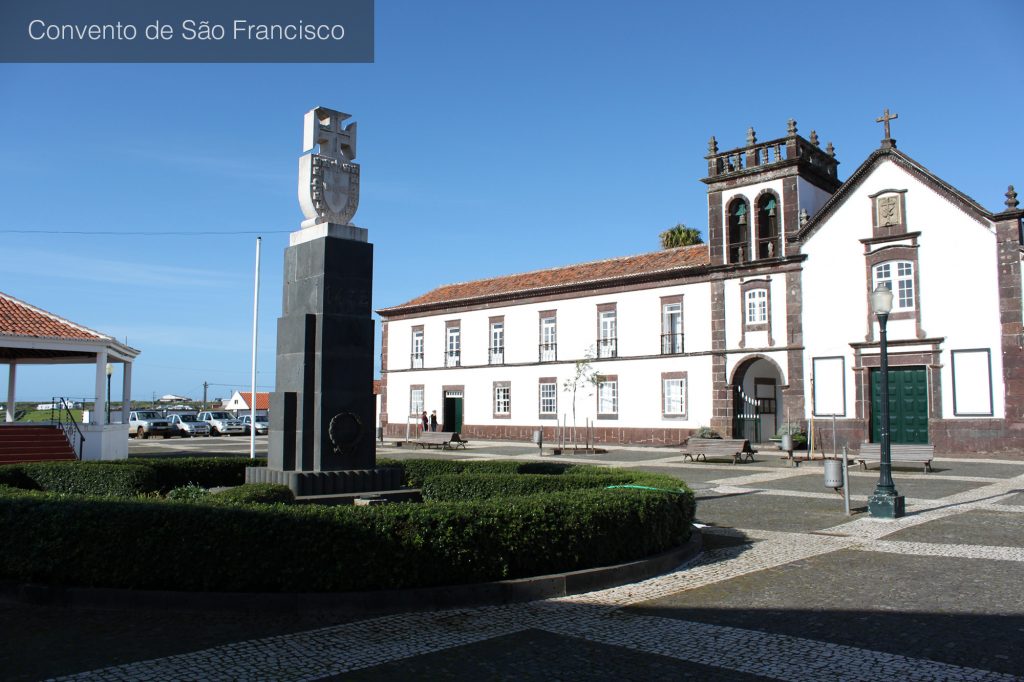
Some houses in Vila do Porto keep the memory of the beginning of the population, showing off pointed doors and Manueline-style windows. The building of the church of Nossa Senhora da Assunção, later rebuilt, was probably the first church erected in the Azores.Inside the São Brás Fort, the cannons aimed at the sea recall the times of pirate raids.Anjos is dominated by a statue of Christopher Columbus. The navigator serving the Spanish Crown took part in a mass celebrated in the Chapel of Nossa Senhora dos Anjos. The Genoese thus fulfilled, in the Azorean land, the vow made during a violent storm that had endangered his fleet. The lateral ogival door remains of the original architectural layout of the chapel.The construction is very refined in Santo Espírito, where the church of Nossa Senhora da Purificação reveals a remarkable ensemble of stone carved in curved forms. The baroque façade contrasts with the square geometry of the bell tower, on which the basalt and the lime dialogue until it resolves into a pyramid covered with decorative ceramic tiles called azulejos.These chromatic games are also repeated in the traditional houses of Santa Maria, generally rectangular, from which stands a cylindrical fireplace resting on a pyramid trunk. The different locations on the island have adopted different colors to establish the contrast with the white of the walls. Blue, yellow, green and … almagre (from which the name Almagreira derives), that is the color of the reddish earth that was used to vitrify terracotta objects.In Ribeira Grande and Azenhas de Baixo you can still see the water mills, used to move the millstones, and the windmills, with the typical and powerful wooden structures on which the sails were mounted.
CRAFTS
The tradition of terracotta having practically become extinct, the works on manual looms resisted and promoted by the Santa Maria Craftwork Cooperative. Linen tablecloths and shirts, woolen blankets and jackets are examples of items created by local craftsmen.
FESTIVITIES
As in all other islands, the feasts of the Holy Spirit animate Santa Maria Island from April and throughout the summer. But it is in August that the island acquires even more color and liveliness. The animation begins with the Santa Maria Rally, now essential in the car racing calendar.
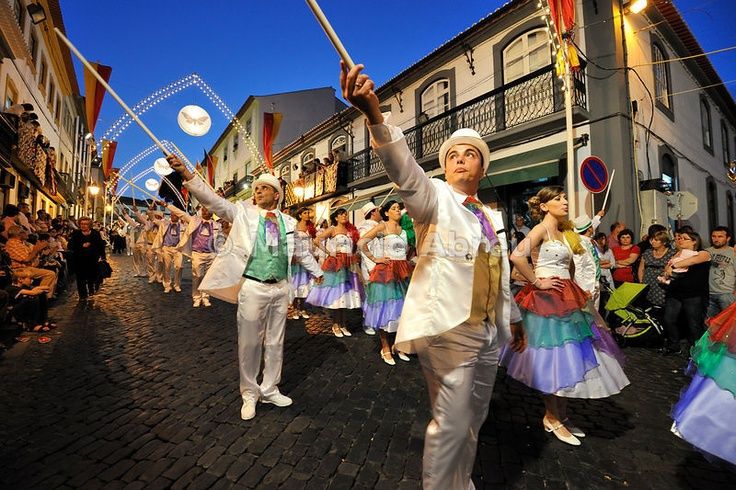
The Feast of Nossa Senhora da Assunção, the patron saint of the island, begins in the middle of the month. Vila do Porto centralizes a vast set of activities, with religious ceremonies flanked by popular festive events, concerts, craft fairs and gastronomic events.The beginning of the “Maré de Agosto” constitutes the highest point of this month of entertainment. It is a festival dedicated to world music, which enjoys an international reputation and which attracts visitors from all over the world. You listen to music during the night and rest on the beach during the day.
GASTRONOMY:FOOD AND BEVERAGES
One of the most emblematic dishes of Santa Maria Island comes from the earth: the caldo de nabos, made with a local species of turnip, small and dark.In the water, in addition to this tubercle, various types of pork are cooked, accompanied by a local sausage (chouriço) and sweet potatoes. The broth thus obtained is then poured onto the plate on slices of bread, while the remaining ingredients are served separately.The local pastry shop is abundant and diverse. Tigeladas are found in all restaurants, but even more typical are perhaps biscuits and pastries such as cavacas, suspiros, melindres, encanelados and biscoitos de orelha (ears), so called for their format.
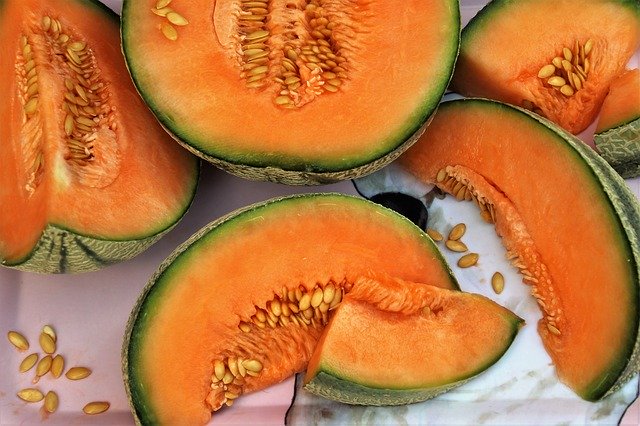
The melon grown on the island has now acquired fame and status as a gourmet product. Among the artisanal sausages, the production of an alheira de Santa Maria is noteworthy.Island of great winemaking tradition, unfortunately mostly abandoned, it still hosts families who dedicate themselves to the production of the typical vinho de cheiro, made from grapes grown in gray stone enclosures, but reserved for essentially domestic consumption. The brandy and fruit liqueurs also enjoy great fame and tradition.








